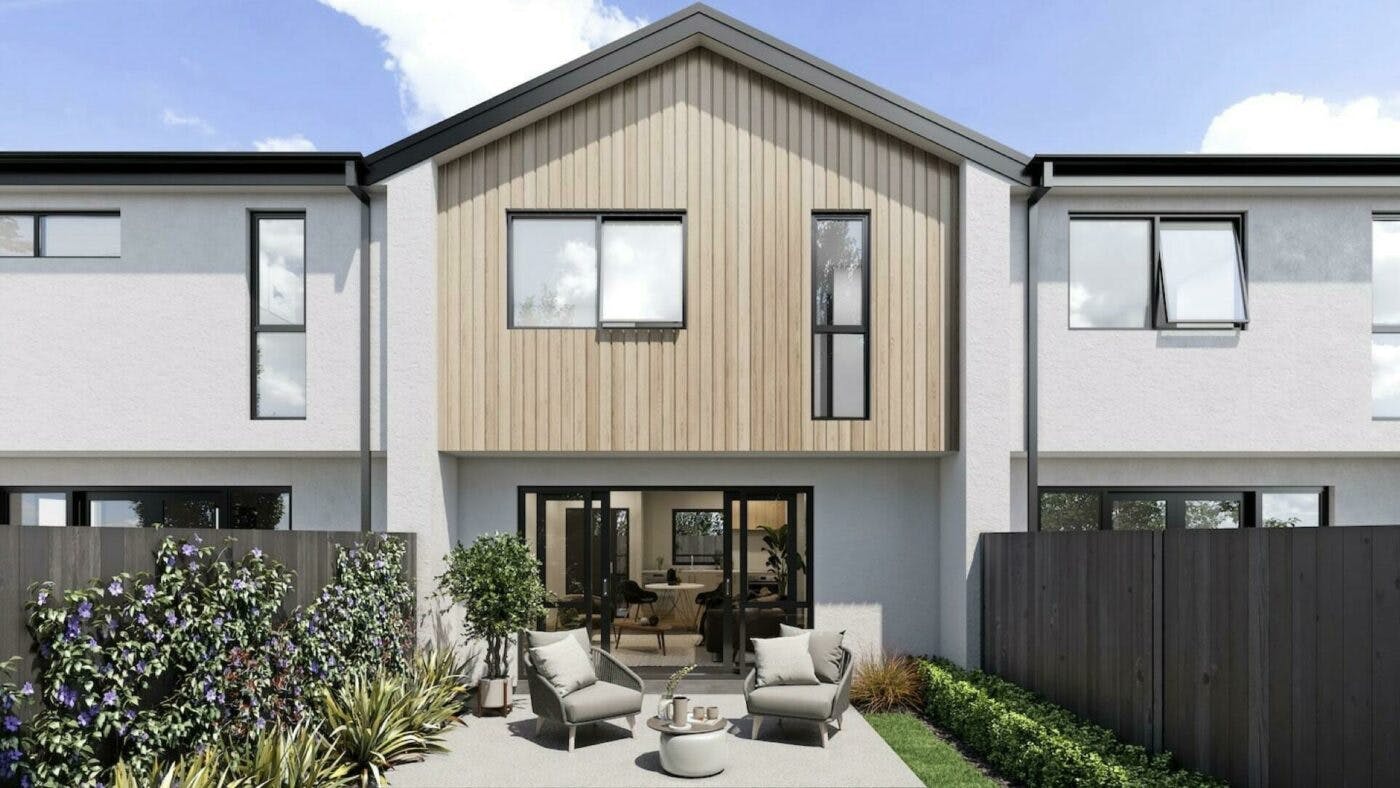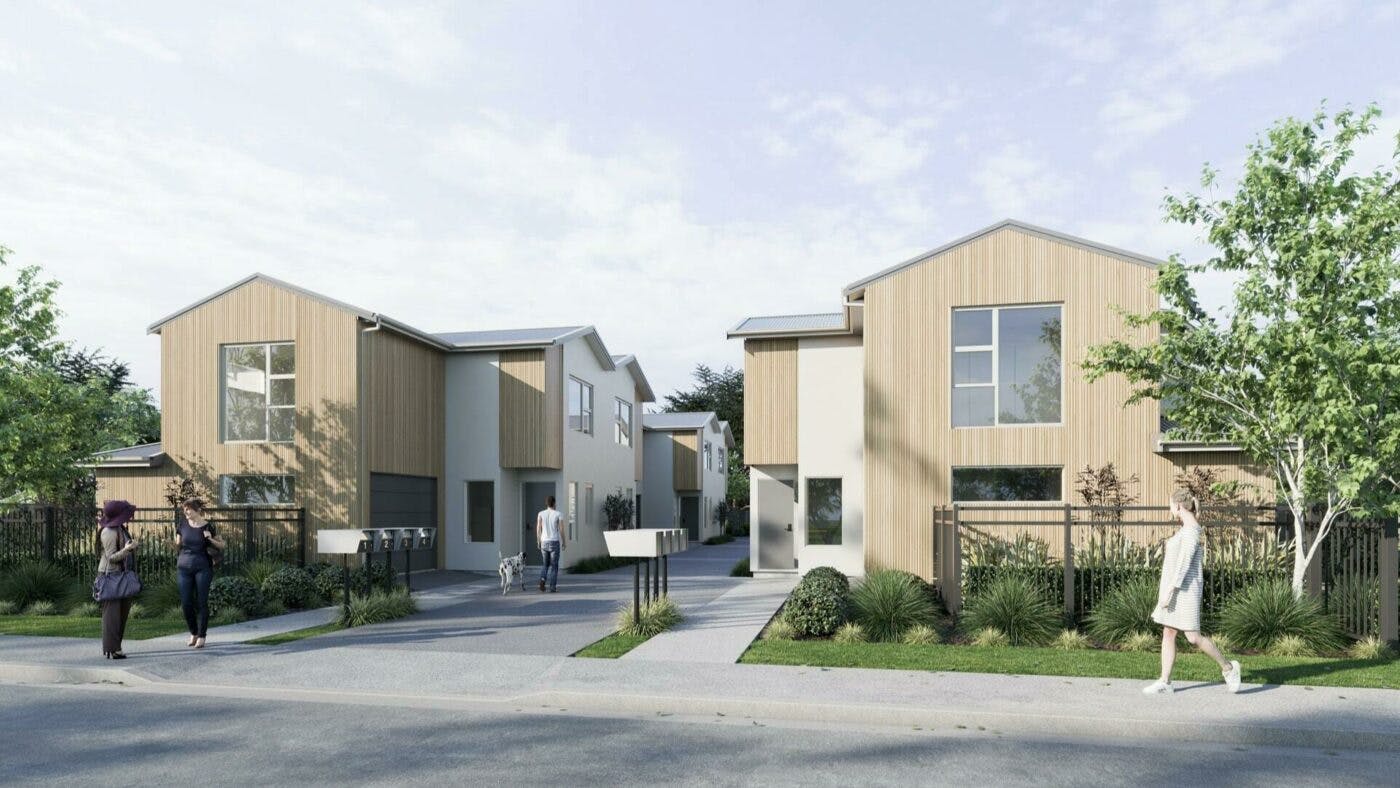
Property Investment
Property Investment
15 min read
Author: Andrew Nicol
Managing Director, 20+ Years' Experience Investing In Property, Author & Host
Reviewed by: Ed McKnight
Our Resident Economist, with a GradDipEcon and over five years at Opes Partners, is a trusted contributor to NZ Property Investor, Informed Investor, Stuff, Business Desk, and OneRoof.
As a property investor you don’t need to rely on your property manager to tell you what the market rent of your property should be.
You can figure out how much your rent should (or could) be all by yourself.
In this case study, you’ll see the exact research I did to figure out that my 2-bed apartment in Christchurch was woefully under-rented at only $405 per week – and that the market rent is around $460 per week.
In this article, you’ll learn the 4-step process I used, so you can use the same for your investment properties.
Do you have a question or comment about the market rent? Feel free to leave your thoughts in the comment section at the end of the page.
According to Tenancy Services – “Market rent is the amount a landlord might reasonably expect to receive, and a tenant might reasonably expect to pay, for a tenancy.”
OK, that’s a lot of jargon. What does that actually mean?
Basically, the “market rent” means that two similar properties in the same area should roughly charge the same amount of rent.
This is determined by what tenants – in general – are willing to pay, and what landlords are willing to rent their properties out for.
This means the rent isn’t just “chosen” by the landlord (you can’t just pick any rent amount you want to).
For instance, if a landlord decides he wants to charge an amount significantly higher than the market rent, a tenant can ask for the rent to be reduced through the Tribunal.
If you want to find out what the market rent is in your property’s area, you can type your address into the Market Rent Tool to get an idea.
Market rent can be determined by a lot of different factors.
But, here are my top 3:
Sounds obvious, but where your property is located is going to have a substantial impact on your market rent, if not the most impact.
Location can be as broad as an entire city (Auckland) or as specific as a street or block.
According to QV, Auckland’s North Shore is the most expensive place to rent with an average rent of $642 a week, up by $33 a week (5.5%) – (March, 2022).
Invercargill remains the least expensive place to rent with an average of $373, up by $33 a week (9.8%).
When it comes to determining the market rent only properties that were recently rented in the immediate neighbourhood matter.
In the Tenancy Tribunal case Dryer vs South (2021 NZTT Christchurch 4321076), the tenant applied to the tribunal for a rent reduction. They used Trade Me listings from neighbouring towns as part of their evidence.
The adjudicator dismissed the rent reduction because the landlord had evidence they had recently rented a property right next door for a higher rent.
So when it comes to determining the market rent, the closer the properties you’re comparing a rental to, the better.

Rents will also change significantly based on the number of bedrooms offered in each property in a similar area.
This means a 2-bedroom property will rent for less than a 3-bedroom property; a 3-bedroom less than a 4-bedroom and so on.
For instance, let’s take Takapuna on Auckland’s North Shore and see how the bedroom count compares.
The median market rent for a:
So when you are making a judgement on what to rent your property for, only compare it to other properties with the same number of bedrooms.
Tenancy Services categorise properties into:
Each has its own market rent, per bedroom count and location.
For instance, in the same suburb of Takapuna, the median rent on a 2-bedroom apartment is $680, a 2-bedroom flat is $560, and a 2-bedroom house $590.
So again, when you are deciding what to set the market rent at, it’s best to compare your rental with properties of the same type.
This will generally give you a pretty solid ballpark when gauging what the market rent is.
But, when you are using the Tenancy Services Market Rent tool, full data is not displayed for every suburb. So if there are only a few apartments in your suburb an average might not be shown. That’s because there aren’t enough properties to give a statistically accurate average.

As well as these top 3 factors, there are some secondary factors that come into play such as:
Here’s a step-by-step guide to working out what the market rent is in your property’s area.
A good place to start your investigations is with the Trade Me Rental Price Index. This will give you a good indication of how the market has shifted in the past 12 months.
For example, rents in Canterbury are up 7% from September last year to September this year. And the average property in Christchurch now rents for $480 (September 2021).
The quickest way to get the latest data is to Google “Trade Me rental price index”, since it can be hard to find if you just go to Trade Me’s homepage.
One alternative is to use the median rent, as calculated by MBIE. The best place to do this is on interest.co.nz. Google “average weekly rents [insert city]” and it will tell you Christchurch City is up 10% from $450 to $495 over this same period.
So, these two searches suggest the Christchurch market has moved by 7-10% since rents were last set. That’s an increase of $30-$40 a week on my property based on the $405 rent.
Put another way, the new rent on a property would be somewhere between $435 and $445 if the original rent was reasonable.
Following on from this the next step is to get a feel for the yield your property currently earns compared with others in your city.
This is where the online calculators come in.
One issue with my property is it was under-rented from the start. That means that a $30-$40 increase (based on the increases mentioned in Step #1) may not bring the property back to market level.
Because the property rents for $405 and is worth about $600,000, the gross yield is currently at 3.7%. That’s pretty low for an apartment, which is typically thought of as a higher-yielding product.
When you plug those numbers into the above calculator, it suggests that on average a $600,000 property in Christchurch yields around 4.16%. That suggests a rent of about $480 a week.
You’re probably thinking – “That’s a $75 increase in weekly rent, that’s enormous.”
I agree.
This calculator doesn’t say that the property should rent for $480 a week. It just gives us a sense of what other property investors are receiving for similarly priced properties.
This helps us build a picture of what a reasonable rent should be.
And in this case the picture that’s being painted is that my property is severely under-rented.
So, the next step is to ask: Would an increase of this much be even reasonable?
The next step in the process is to take a snoop at the Tenancy Services website.
Here you will find records for all the actual tenants that have signed up in the last 6 months.
Handily, this is often broken down by property type (e.g. townhouse vs apartment) and the number of bedrooms.
But this is only provided for areas where there is enough data. So it’s more likely you’ll find granular data in larger cities than tiny towns.
For this property, Tenancy Services says the median rent for a 2-bedroom apartment in Central Christchurch is $450, and that 25% of properties rent for between $450 and $495 (the upper quartile).
Now this property was refurbished only 2 years ago, so I expect it would rent above the average, but not in the top 25% (i.e. about $495).
So, we are starting to get a bit of a rental range.
This is the final and most important step.
You’ve got to compare your property with similar ones available for rent on Trade Me and realestate.co.nz.
I’m not talking about a cursory glance. Nope. Instead, you should take the same structured approach that a valuer does when looking at your property.
That means returning to Trade Me and looking at a handful of similar properties. You then make an assessment of whether that property is better or worse.
This allows you to build a real-world picture of the market and target specifically where you think your property sits within that spectrum.
Here’s my property: It’s a 2-bed, 1-bath apartment with two separate car parks (i.e. they are not tandem parks).
Here’s the exact process I used for my property.
Currently there are 12 x 2-bed apartments for rent in Christchurch, but I only picked 5 of them to analyse for my research table.
Here, I took into consideration what was on offer, the photos, and the area, and then ranked them in terms of whether they were superior (better) or inferior (worse) to my property.
For example, 211 Peterborough Street is a brand new 2-bed, 2-bath apartment in Christchurch renting for $450. Despite the fact that it’s brand new and has an extra bathroom, I’ve labelled it inferior to mine because it has no car park.
What’s really helpful about this method of comparison is it strips away the emotion often associated with rent rises.
This table suggests:
So my sense is that the right rental range is somewhere between $460 – $480.
So what have we learnt:
Step #1 suggests a rent of $435-$445, but this assumes the original rent was right. It wasn’t.
Step #2 suggests a rent of $480 to achieve the same yield as other investors.
Step #3 suggests a range between $450-$495.
And Step #4 (the most important step) suggests a range between $460-$480.
Because Steps 2, 3 and 4 are pointing in the same direction, the right rental range appears to be $460-$480.
For me, $460 feels right. It increases the rent to market level. And should my tenant decide to find another place to rent once their fixed-term contract ends, another tenant is likely to snap it up quickly if priced at the lower end of the rental range.
It’s a big rent increase, but given that it’s currently under-rented I feel confident it’s a fair one.
So, let’s say I serve my 60 days’ notice to my tenants informing them the rent is going to be $460 in April 2022.
In all likelihood I think the tenants will decide to find somewhere else to live. They’re on a 12-month fixed term, and use the second bedroom as storage. So I wouldn’t be surprised if they decide to move on and find somewhere cheaper.
And this property is likely to appeal to a small family e.g. a couple with 1 child, or a group of professionals who would make full use of both bedrooms.
The economist in me smiles at the “allocative efficiency.”
These steps are important tools for investors because it lets you know what market rent you should be charging for your property.
This is because both overcharging and undercharging can have serious repercussions.
For instance, charge too high and you could be facing a Tenancy Tribunal case to dial it back.
But charge too low a rent, and you could be leaving valuable rent on the table, impacting your investment’s cashflow. In this instance, you’ll be most likely making up the shortfall out of your own pocket.
I get it. This process takes a bit of time. But, it should only take an hour every 12 months. And it will allow you to price your property with confidence.
This level of research will also protect you. Let’s say your tenant decides to challenge you at the Tenancy Tribunal.
In this instance, having this level of research at the ready for any adjudicator to see, will go a long way.
You could also give your research to your property manager, to convince them that your decision is fair and based on market data.
Either way, it’s a really good way to get an emotionless gauge of the market, and ultimately the answer to your question: What is the rent I should charge for my property?

Managing Director, 20+ Years' Experience Investing In Property, Author & Host
Andrew Nicol, Managing Director at Opes Partners, is a seasoned financial adviser and property investment expert with 20+ years of experience. With 40 investment properties, he hosts the Property Academy Podcast, co-authored 'Wealth Plan' with Ed Mcknight, and has helped 1,894 Kiwis achieve financial security through property investment.